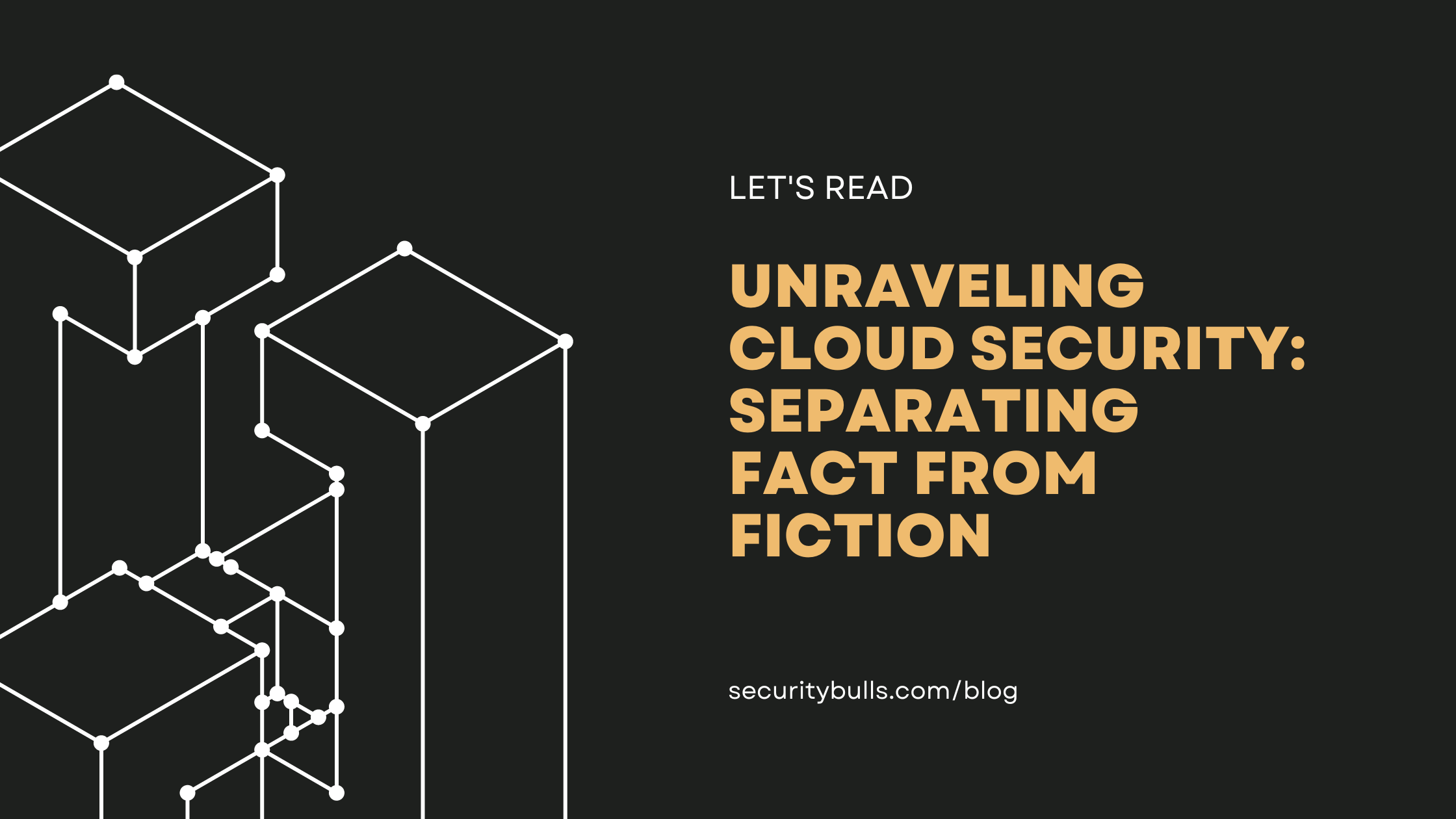Introduction
Cloud computing has revolutionized the way businesses and individuals store, access, and manage data. The scalability, flexibility, and cost-effectiveness of cloud services have made them increasingly popular. However, concerns surrounding cloud security have often hindered widespread adoption. In this blog post, we will debunk the myth of cloud security by examining the realities, challenges, and advancements in cloud security measures.
The Shared Responsibility Model
One common misconception about cloud security is that it is entirely the responsibility of the cloud service provider (CSP). However, the reality is that cloud security operates on a shared responsibility model. CSPs are responsible for securing the underlying infrastructure, network, and physical data centers. Meanwhile, customers are accountable for securing their data, applications, and user access.
While CSPs invest heavily in state-of-the-art security measures, customers must also implement proper security practices, such as strong access controls, encryption, and regular security audits. Neglecting these responsibilities can leave vulnerabilities that may compromise data security. Therefore, the myth that cloud security is solely the CSP’s responsibility is debunked by acknowledging the shared responsibility model.
Challenges in Cloud Security: Debunking the Myths
- Misunderstanding the Shared Responsibility Model: A prevalent myth is that once a company migrates to the cloud, security becomes solely the vendor’s concern. While CSPs do provide robust security measures, the onus is on the customer to ensure the secure configuration of their applications and data. This means properly defining user access, setting up encryption, and regularly monitoring for vulnerabilities.
- Customization and Configuration: Cloud providers offer a variety of security tools, but they may not be tailored to your specific needs. Blindly trusting default settings without proper customization can create gaps in your security. Take the time to configure these tools according to your requirements and business processes.
- Access Management and Identity: Another fallacy is assuming that access management is fully automated and foolproof. While cloud providers offer authentication tools, it’s up to you to define user roles, permissions, and access controls. Failing to manage these effectively could lead to unauthorized access and data breaches.
- Assuming Data Backup is Automatic: It’s easy to assume that data stored in the cloud is automatically backed up. However, understanding the frequency of backups, retention policies, and restoration procedures is vital. Relying solely on the provider’s backup solutions can be a risky assumption.
- Third-Party Integrations: Startups and companies often use third-party tools alongside cloud platforms. Neglecting the security measures of these integrations can introduce vulnerabilities. Always assess the security practices of third-party services you integrate into your cloud environment.
Advancements in Cloud Security
CSPs continuously invest in enhancing their security measures to combat evolving threats. They employ advanced encryption protocols, intrusion detection and prevention systems, and firewalls to protect data in transit and at rest. Additionally, they implement stringent access controls, multi-factor authentication, and role-based access to prevent unauthorized access.
Moreover, CSPs leverage cutting-edge technologies such as artificial intelligence and machine learning to detect and respond to security threats in real-time. These technologies enable anomaly detection, behavior analysis, and proactive threat hunting to identify and mitigate potential risks.
Compliance and Regulatory Considerations
Cloud service providers understand the importance of compliance with various industry regulations and standards. They undergo rigorous audits and certifications to ensure that their security practices meet the highest standards. These certifications include ISO 27001, SOC 2, HIPAA, and PCI DSS, among others.
By choosing a reputable and compliant cloud service provider, customers can ensure that their data is stored and processed in a secure and compliant manner. The myth that cloud services cannot meet regulatory requirements is dispelled by the growing number of businesses operating in regulated industries that successfully utilize cloud solutions.
Emerging Threats and Continued Vigilance
While cloud vendors provide robust security measures, it’s important to acknowledge that the cybersecurity landscape is constantly evolving. New threats emerge, and attackers develop novel techniques to exploit vulnerabilities. Relying solely on your cloud vendor’s security features without staying informed about emerging threats and industry best practices can leave your business exposed.
Conclusion
In conclusion, the Shared Responsibility Model serves as an effective framework for understanding the roles of customers and cloud providers when it comes to security. Even though CSPs provide robust security, customers must properly configure their applications and data, customize tools according to their requirements, ensure user access is well-defined and monitored, and continuously assess third-party integrations. Being proactive about security measures is essential instead of being reactive in case of a breach or malicious event. Understanding the ins and outs of cloud security will ensure that your data and applications are protected from potential attackers. Taking advantage of automated cloud security technologies can make this process easier – Securitybulls offers comprehensive cloud security assessment services that help keep your environment safe. Don’t delay in taking action – contact us today for peace of mind!

